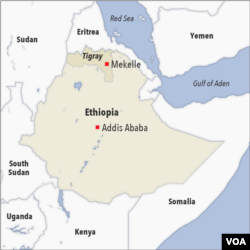World Health Organization officials say insecurity and bureaucratic difficulties continue to prevent medical supplies and other crucial relief from reaching millions of beleaguered civilians in conflict-ridden northern Ethiopia.
An estimated 9.4 million people in northern Ethiopia’s Tigray, Amhara, and Afar regions are in desperate need of humanitarian assistance. Millions are suffering from severe food shortages, acute malnutrition is rising, disease and chronic illnesses are going untreated.
The World Health Organization reports dozens of mobile health and nutrition teams are operating across the three regions. However, treating those in need remains challenging. It says essential medical equipment and medical supplies, vaccines and basic medicines are not reaching the people in need.
WHO spokesman Christian Lindmeier says the situation is particularly critical in Tigray. He says the number of people needing health assistance has risen from 2.3 million during the first half of December to an estimated 3.9 million.
However, he says there is, what he calls, light on the horizon. He notes a shipment of medical supplies reached Mekelle, the capital of Tigray at the end of January. And, he adds the Ethiopian government has announced it would facilitate daily relief flights to augment the transportation of crucial goods by land.
“WHO is preparing to airlift critically needed medicines, medical supplies and equipment to Tigray," he said. "The first shipment of this is expected to be dispatched this Friday,11 February when 10 metric tons of the total 33 metric tons of supplies will be airlifted. Most clearances for this have been secured and the remaining permits will be processed over the next few days.”
Nevertheless, he says humanitarian agencies are being forced to downsize their operations because they are running out of supplies, fuel, and cash. He warns these operations may have to shut down in the coming weeks if the situation does not improve.
He says an integrated measles campaign at the end of January highlights some of the difficulties aid agencies run into. The campaign, he says targeted nearly 800,000 children under age five using vaccines provided by the Ethiopia Ministry of Health.
“During this phase, 145,000 children of the targeted population were reached because the campaign faced challenges, including cash, lack of fuel, and cold chain capacity,” he said.
Lindmeier says WHO continues to negotiate with the authorities for access to the regions. Despite ongoing difficulties, he says some things are moving and that is a good development.










